The End of Mail Service on the Chesapeake & Ohio
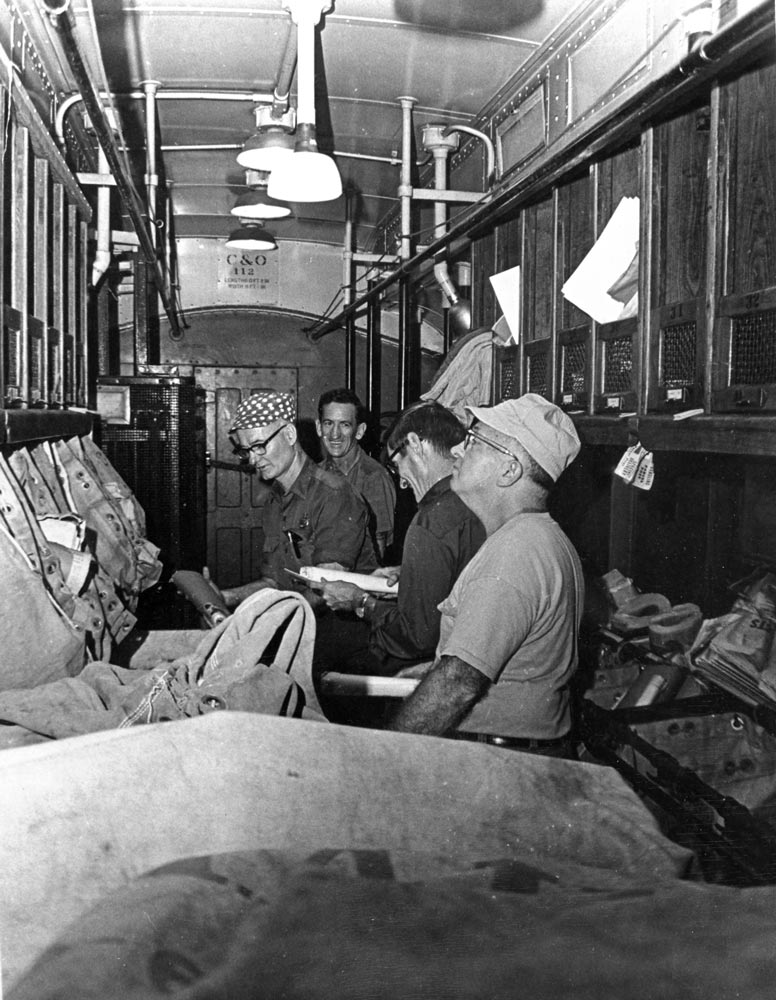
F. Douglas Bess, Jr. Collection
The Railway Post Office (RPO) was in existence for over 130 years and was an efficient way to move mail throughout the United States. Mail was sorted in-route for destinations to insure timely delivery. The RPO car was off-limits to passengers, and postal clerks were armed with pistols.
October 28, 1967, however, marked the end of through RPO mail service on Chesapeake & Ohio passenger trains between Washington, D.C. and Cincinnati, Ohio. Although some limited sorting of mail still existed, it was really the beginning of the Post Office Department’s move to handle mail on trucks and planes throughout the U.S.
The history of carrying mail on trains in the United States dates back to the early part of the 1830’s. Mail was carried only on a couple of railroads at that time, although it was carried in bags along with other baggage. On July 7, 1838 the US Congress officially designated all railroads as official postal routes.
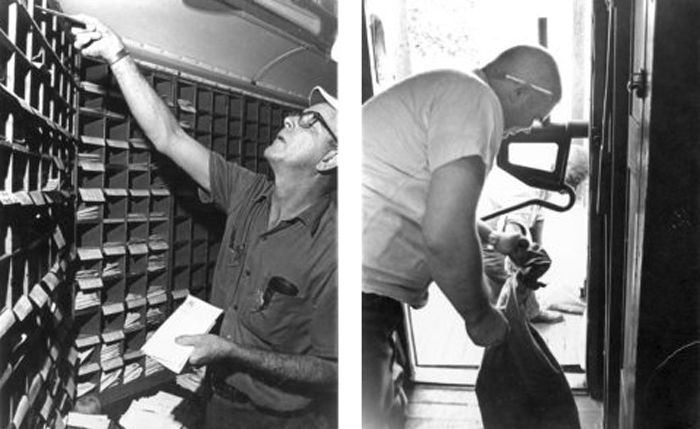
F. Douglas Bess, Jr. Collection
The first mail sorted on a train while in route occurred on August 28, 1864, between Chicago, Illinois and Clinton, Iowa. Mail was sorted to, and received from each post office along the route, as well as major post offices beyond the route’s end-points. The expansion of mail service came with the signing of the Pacific Railroad Act on July 1, 1862, which the government funded to help build the transcontinental railroad. Other railroads were later built in the west which greatly expanded mail service by rail.
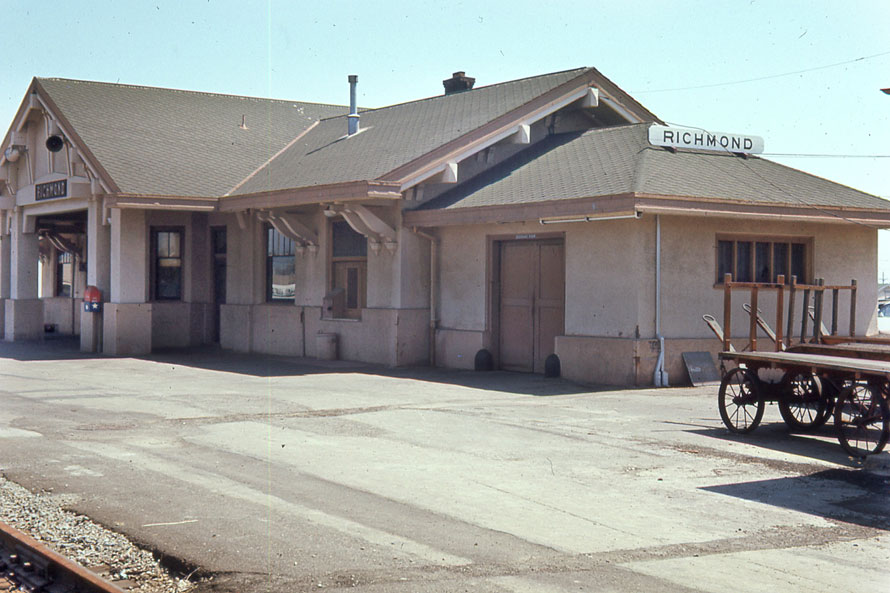
F. Douglas Bess, Jr Photo
Some time after WW II, people began abandoning travel by passenger trains and opted instead to use cars or airlines. Improved roads and air service made travel by these modes more attractive, convenient and faster. Passenger trains were removed gradually over the years for lack of ridership. However, a number of trains continued because the revenue for hauling mail offset losses by decreased ridership. With reduced routes and the increasing cost of moving mail by rail, the Post Office Department came to the decision instead to use trucks and planes to move the mail.
As contracts were cancelled, railroads began applying to the Interstate Commerce Commission (predecessor to today’s Surface Transportation Board) to discontinue most remaining passenger trains. A case in point was the removal of C&O’s trains #3, the Fast Flying Virginian (FFV) and #4, The Sportsman on May 12, 1968. The eastbound and westbound George Washington, trains #1 and 2, were the only passenger trains left on the C&O after that date and they lasted until the formation of Amtrak on May 1, 1971.
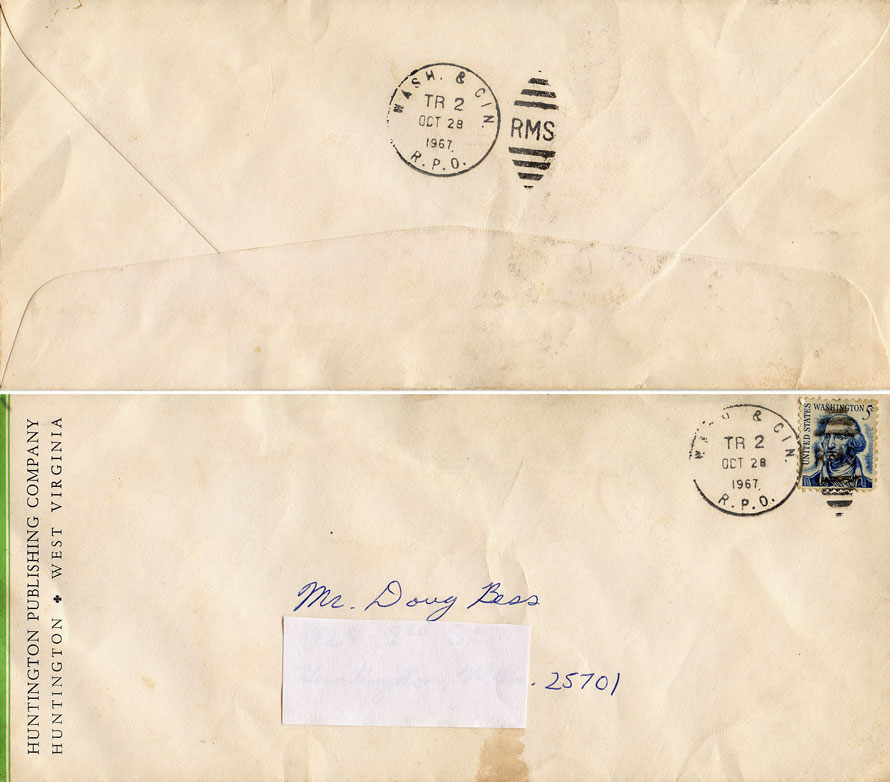
F. Douglas Bess, Jr Collection
I was fortunate, along with several other members of the Collis P. Huntington Railroad Historical Society, to have ridden on and photographed the last run of RPO mail service on the C&O. The black and white photos (above) of the interior of the C&O RPO car were taken by a staff photographer for the local Huntington newspaper. These photos were passed down to me by my grandfather, Bill Bess, who worked for the newspaper for over forty years.

F. Douglas Bess Jr. Photos.

F. Douglas Bess, Jr. Photos.

F. Douglas Bess, Jr. Photos.
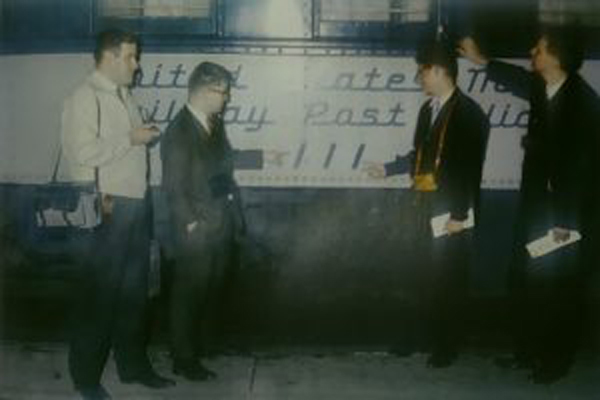
Larry K. Fellure Photo, Bob Withers Collection.
The Railway Mail Service (RMS) within the Post Office Department (POD) existed between 1864 and September 30, 1948. The RMS was renamed the Postal Transportation Service, and existed until 1960. The change in name came about by the increased use of the Highway Post Office. Similar to the RPO, the HPO, came into existence in 1942 to supplement RPO service. As more passenger trains were discontinued, more mail was being handled over the highways by the HPOs. After that, the management of the mail on trains came under the Bureau of Transportation, which was still under control of the POD. By 1971, the POD was no longer a cabinet position. With an act of Congress, it became a governmental agency, and was renamed the United States Postal Service.
Doug Bess – Photographs and text Copyright 2018 by Doug Bess except where otherwise noted.
This article first appeared on Doug’s website, WVRails
Doug, you were blessed to be able to see the RPO’s in service before the end. The public today has no clue of what communications were like before radio, television, and finally the internet. Distribution of first class letters (“Were they like email and texting, Dad?”), magazines, newspapers and everything else was only made possible by the railroads and the trains that ran throughout the country. Thank you for sharing the story and the photos. Gone but not forgotten.
Wonderful history . I remember the RPO cars up on the Central Vermont after coming out of Springfield, Ma and points south.
My dad worked the mail between St. Louis and Burlington Iowa and later St. Louis to Arkansas till around 1960.
RPO trains didn’t have to stop to offload or pick up mail either. The local incoming mail was just thrown out in a sturdy canvas bag onto the dock as the train continued on it’s way, and pickup mail was grabbed by a swing-out arm mounted on the postal car from a pole mechanism by the trackside.